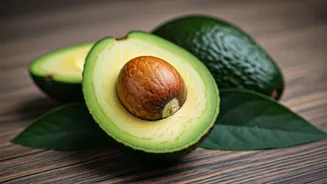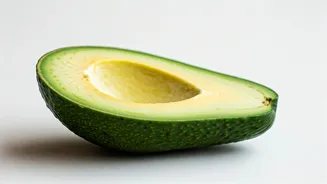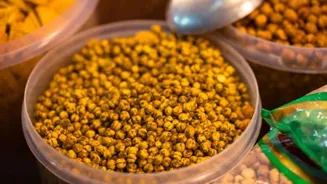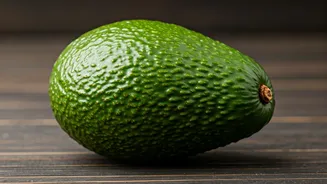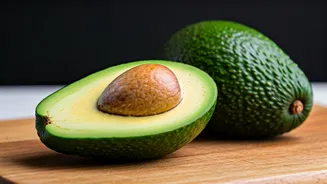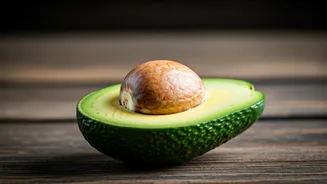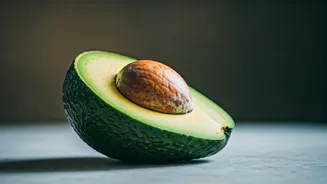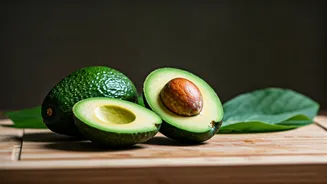Inspect the Skin
The first step in your avocado quest is a visual inspection of the skin. The skin of an avocado is like a roadmap to its ripeness. Look for color changes.
Generally, the more the skin is dark, the more ripe the avocado is. This is not always a perfect indicator, as the colour can vary depending on the variety of the avocado. Some avocados will stay green when ripe. Avoid any avocados with deep indentations, bruises, or cracks. These are signs of damage. The avocado should feel firm but not rock-hard. A firm avocado indicates that it is still unripe. This is because the flesh is still firm and the fruit has not reached its peak of flavour and texture.
The Stem Test
Next, perform the stem test, a simple yet effective method to determine ripeness. The stem provides a secret window into the avocado's readiness. Gently remove the small stem cap at the top of the avocado. If the area underneath is green, the avocado is likely perfectly ripe and ready to enjoy. If the area is brown, the avocado is overripe, which can mean the fruit has started to spoil. If the stem is difficult to remove or the area is a very light colour, the avocado is still unripe and needs more time to ripen. This approach gives a fast and reliable check of the fruit's condition.
Feel the Fruit
The sense of touch offers further insights into the avocado's state. Hold the avocado in your hand and gently squeeze it. Ripe avocados will give slightly to gentle pressure. They shouldn't feel mushy or too soft, as this can be a sign of overripeness. An avocado that feels firm to the touch is not yet ripe. If the avocado is very hard, it will need several days to ripen. An avocado that has a bit of give is an indication that it’s almost ready. This gentle method allows you to evaluate the softness, helping you choose the perfect avocado for your needs.
Know Your Varieties
Understand that different avocado varieties display ripeness differently. The commonly available Hass avocado usually changes color, going from green to a dark purplish-black as it ripens. Other varieties like Fuerte stay green even when ripe. So, the colour alone might not be a reliable indicator of ripeness. Pay close attention to the feel of the avocado and the stem test to ensure you are selecting a perfectly ripe fruit. Become familiar with the visual and textural cues specific to each type of avocado, so you can make an informed choice every time.
Ripening at Home
Sometimes, you may have to buy an unripe avocado, which means you have to ripen it at home. If the avocado is unripe, there are several methods you can use to speed up the process. The best way is to place the avocado in a paper bag with a banana or an apple. These fruits emit ethylene gas, which aids in the ripening process. You can also store it at room temperature for a couple of days. Check the avocado daily by gently squeezing it and checking the stem cap. Once the fruit yields to gentle pressure, it is ready to eat. The warmth will also help to accelerate the ripening process.
Storage Solutions
Once your avocado has reached perfect ripeness, it's essential to understand storage options. If you're not planning to eat the avocado immediately, you can store it in the refrigerator. This will slow down the ripening process for a few days. You can also cut the avocado and keep the unused portion. To prevent browning, sprinkle the exposed flesh with lemon or lime juice and store it in an airtight container or wrap it tightly in plastic wrap before refrigerating. The acid in the citrus will help slow oxidation. By following these simple tips, you can extend the shelf life of your avocado and prevent any spoilage.
